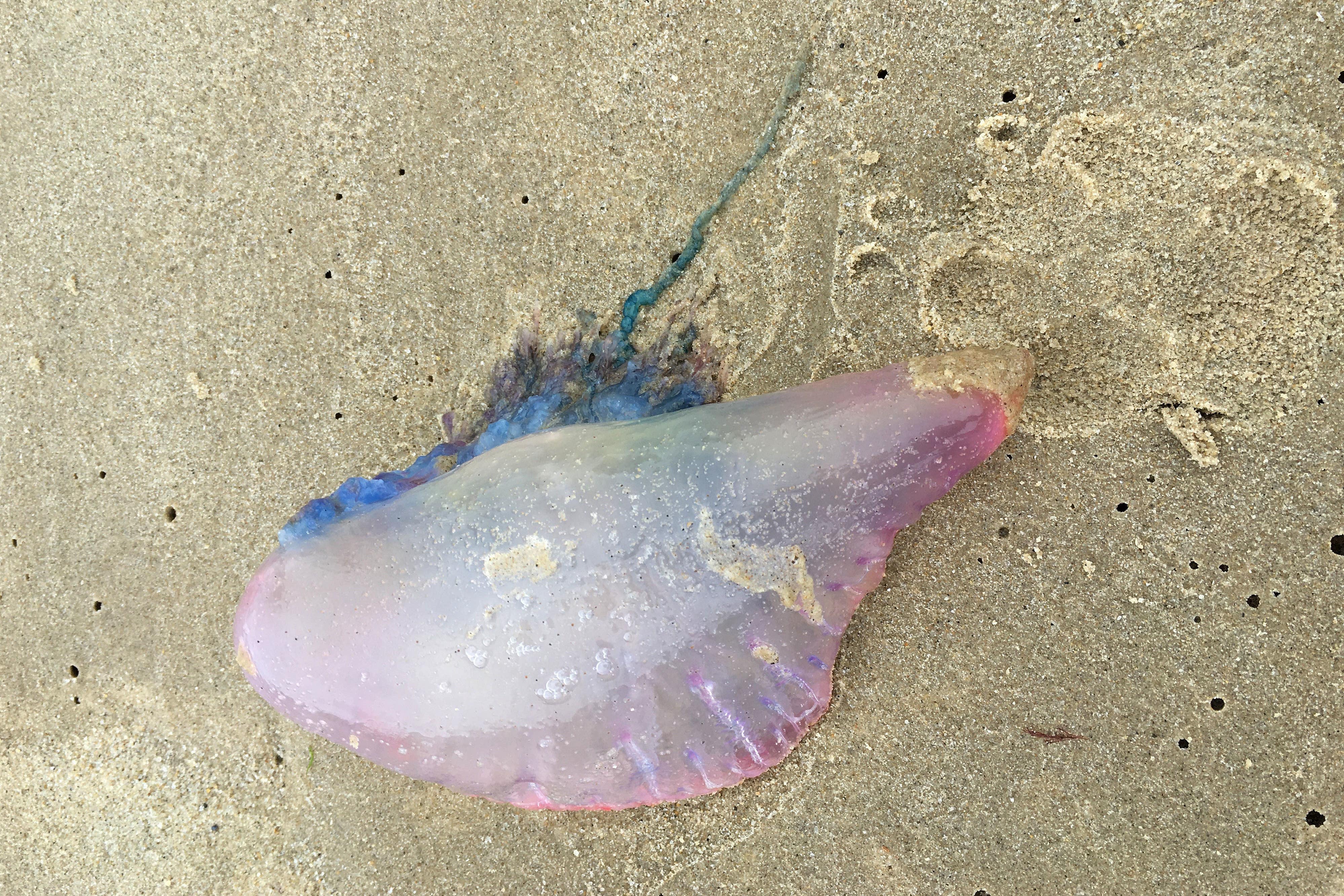Warnings as ‘fearsome predator’ Portuguese Man O’War spotted on UK coast
Portuguese Man O’War are often mistaken as jellyfish but they are actually a close cousin

Your support helps us to tell the story
From reproductive rights to climate change to Big Tech, The Independent is on the ground when the story is developing. Whether it's investigating the financials of Elon Musk's pro-Trump PAC or producing our latest documentary, 'The A Word', which shines a light on the American women fighting for reproductive rights, we know how important it is to parse out the facts from the messaging.
At such a critical moment in US history, we need reporters on the ground. Your donation allows us to keep sending journalists to speak to both sides of the story.
The Independent is trusted by Americans across the entire political spectrum. And unlike many other quality news outlets, we choose not to lock Americans out of our reporting and analysis with paywalls. We believe quality journalism should be available to everyone, paid for by those who can afford it.
Your support makes all the difference.British beachgoers are being warned of a "fearsome predator" that recently washed up on the Devon coast.
A Portuguese Man O'War was spotted yesterday in Wembury. Although they are often referred to as jellyfish they are actually a species of siphonophore, which are a close cousin.
Its sting is rarely deadly to people, it has an extremely severe sting that causes welts on exposed skin.
The Wildlife Trust Website says: "They are fearsome predators, catching small fish and crustaceans with their long stinging tentacles. It's these tentacles that you need to watch out for too - they can sting long after the animal has died."
Kayaker Samantha Barnes, a Devon Wildlife Trust volunteer, spotted the creature while kayaking. Also, the Wembury Marine Centre reported that many people had seen them washing up over the past few days.
The Wembury Marine Centre posted on Facebook: "These beautiful pics of a Portuguese Man-O-War were sent in this morning by local kayaker and Devon Wildlife Trust volunteer, Samantha Barnes!
"We've also had a few reports of them washing up on the beach over the past few days - be careful not to touch!"
The Portuguese Man O’War is more likely to wash up on British shores during the autumn months. They are sometimes found washed up on our shores after westerly winds. They cannot swim despite being an aquatic lifeform and are at the mercy of the wind.
Portuguese man-of-war can vary greatly in size – particularly in the length of their poisonous tendrils which can reach 165 feet below the air-filled sack which keeps the main body of the animal floating on or near the surface of the water.
These poisonous strands are used to paralyse and kill fish and other small animals. Each of the highly venomous animals is actually made up of several organisms working together.
They consist of four separate “polyps” – these include the balloon-like body, which can inflate and deflate in order to regulate the creature’s depth, the long poisonous tentacles, the digestive organs, and finally the reproductive organs.



Join our commenting forum
Join thought-provoking conversations, follow other Independent readers and see their replies
Comments